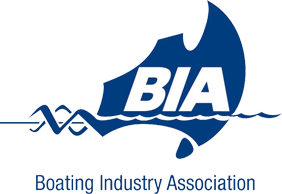Furling Systems – Understanding, Maintaining and Improving
15 January 2021With continuous developments of systems and technology today, sailing has become much easier and efficient. One system that sailors take advantage of is the roller furling systems.
Types of Furling Systems
Roller furling is an efficient, easy and convenient way to deploy or store sails on a yacht. It is recognized to be one of the most important systems on modern sailboats. It most commonly utilizes aluminium tubing (sections/extrusions) around a stay (wire or rod) and is operated and controlled by ropes, hydraulics or electrical switches. There are different types of furling systems, including in-mast furling (sail furls inside mast), boom furling (sail furls inside boom) or headsail furling (sail furls around aluminium tubing on a stay).
Benefits of Furling Systems
Benefits of sail furling include being easily operated from the cockpit and can still be managed amidst heavy weather. This maintains crew safety at all times, they can be operated single handed and the sail doesn’t have to be hoisted or lowered each time you go sailing. However, they can only offer full benefits once they are used and set-up properly. Here are some things that you should know about roller furling and how to improve its efficiency.
Understanding Roller Furling Systems
To start off with you must load the furling line onto the furler drum before the sail and halyard is attached by turning the aluminium section by hand (Pro Tip: Load the rope on the opposite way you want the furler to furl the sail in and make sure the UV protection is on the outside). Then install the sail to the drum and swivel, and halyard to the swivel. It is important to lock off these shackles with pliers or a spanner. Sails are commonly left up for extended periods of time, this prevents the shackles working loose. Halyard tension is critical when hoisting the sail, it needs to be fairly tight once it is fully hoisted. This prevents the halyard getting wrapped around and severely damaging the aluminium section or stay.
When furling the sail in, pull the furling line on a winch and ease the sheet/s as you pull the furling line. It is a good practice to stop every so often, holding the furling line tight and pulling the sheets to ensure the sail is furled tightly. It is a good practice to have at least two wraps of sheet line around the furled-up sail to prevent the sail from getting out when you’re not on the boat or if it gets windy.
The sheets and furling line should be tied off firmly on a winch, cleat or clutch when the sail is furled up. The furler drum should have at least 3-4 turns of the furling line on it when the sail is furled in. This prevents the furling line from pulling out of the drum or putting unnecessary load on (most commonly) plastic drum parts, which are easily broken.
When unfurling the sail, ease the furling line in a slow and controlled manner, as you pull the sheet on the winch. The furling line loads onto the drum correctly this way, it prevents the line from catching, coming off the drum or any other issues later when you need to furl the sail back up later. The furler should never free wheel or be pulled out by the wind, it must be controlled smoothly.
Improving and Maintaining Roller Furling Efficiency
There are numerous ways to improve and maintain roller furling efficiency. It is important to grease the bearings in the furler swivel and in the drum. It is equally as important to oil sheaves and blocks used to control the sail and furling operation. Oil and grease prevent bearings or sheaves from corroding or seizing and ensures smooth and reliable furling and sailing. Check over all cordage occasionally is important, looking over the entire halyards, sheets and furling lines lengths for chafe or damage and replacing when necessary.
Another useful trick is marking halyards or lines at optimal tensions for furling, so it can be replicated every time and prevent issues. To do this simply mark the genoa halyard for genoa furling, the main-topping lift and vang line for mainsail furling with a permanent marker at the clutch or cleat.
Riggtech recommends maintaining the sail by getting it cleaned and silicon coated annually to maximize furling efficiency. Not only does it increase the sails longevity, it also helps the sail to slide on itself, the mast or boom better. It allows you to furl the sail up tighter, which is extremely important for in-mast and in-boom furling systems.
Too commonly we see sailors have furling issues with halyard wrap, furler bearings, halyard tensions and line or furling angles. If you have any issues with your roller furling systems, give us a call at Riggtech. With over 30 years of experience in the yachting industry, we have come across many problems with furlers and are confident in finding a solution to any problem.
Optimized by: Netwizard SEO


